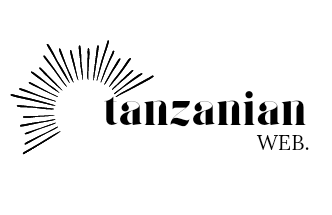“200”, Aptitude Test Questions and Answers
for Community Development Officer Grade II – MDA & LGA.
ABSTRACT
This set of 200 community development
aptitude questions provides a balanced assessment tool for evaluating the
knowledge, analytical ability, and practical judgment of degree-level
candidates. The questions integrate theoretical, policy-based, and situational
aspects of Tanzania’s community development framework, emphasizing
participatory approaches, governance, gender equality, social inclusion,
environmental sustainability, and accountability. Each item aligns with
national policies such as the Community Development Policy (2021), Vision 2050,
and the Sustainable Development Goals, ensuring contextual relevance. Overall,
the collection maintains conceptual depth, diversity, and fairness—reflecting
both academic rigor and real-world application in the Tanzanian context.
Prepared by: Community Development Officer
Compiled by Johnson Yesaya Mgelwa.
A lawyer based in Dar-es-salaam.
0628729934.
Date: October 10, 2025
Dear applicants,
This collection of questions and answers
has been carefully prepared to help all of you to understand the key areas
tested during the interview. The goal is to provide a useful, and practical
study guide so you can all perform confidently and fairly in the selection
process. I wish you the best of luck, and may this resource support you in
achieving success!
Warm regards,
Johnson Yesaya Mgelwa
For Personal Use by Applicants Preparing
for MDA and LGA Cooperative Officer Grade II interview at Public Service
Recruitment Service.
ALL
QUESTIONS ARE COMPILED TOGETHER.
1. Which of the following best describes the main goal of community development in Tanzania?
A. To improve living standards through charity B. To foster self-help and empowerment among citizens C. To expand government administrative control D. To distribute aid to vulnerable groups
Answer: B
Rationale: The essence of community development in Tanzania is to
empower citizens to identify and solve their own problems through participatory
and self-help approaches, aligning with the National Community Development
Policy (2021).
2. Participatory Rural Appraisal (PRA) is primarily used to:
A. Train community leaders B. Assess local needs and priorities C. Promote
cultural festivals D. Implement environmental projects
Answer: B
Rationale: PRA is a participatory method enabling communities to analyze
their conditions, identify priorities, and plan actions, promoting ownership
and accurate problem diagnosis.
3. A key indicator of successful community mobilization is:
A. Active community participation in decision-making B. Increased government
funding C. High attendance at meetings only D. Political endorsement
Answer: A
Rationale: Effective mobilization leads to genuine participation where
communities influence decisions, reflecting empowerment rather than token
involvement.
4. In project planning, a “problem tree analysis” helps to:
A. Identify income-generating activities B. List available resources C.
Schedule project timelines D. Trace
causes and effects of community issues
Answer: D
Rationale: Problem tree analysis visually maps the root causes and
effects of a problem, forming a foundation for logical project planning and
formulation.
5. Which principle underlies the concept of sustainable
development?
A. Rapid industrialization B. Equity between generations C. Maximum resource
extraction D. Prioritizing profit over environment
Answer: B
Rationale: Sustainability balances present needs with future
generations’ rights, ensuring environmental, social, and economic equity,
consistent with Tanzania’s Development Vision 2050.
6. The main purpose of community situational analysis is to:
A. Compare one village with another B. Establish leadership structures C.
Allocate financial resources D.
Identify available and lacking resources
Answer: D
Rationale: Situational analysis gives a baseline understanding of a
community’s resources, challenges, and potential, guiding informed project
interventions.
7. Which approach best encourages local ownership of development
projects?
A. Top-down planning B. Expert-driven design C. Participatory planning D.
External consultancy
Answer: C
Rationale: Participatory planning ensures community members contribute
to design, implementation, and monitoring, fostering accountability and
sustainability.
8. According to Tanzania’s National Environmental Policy (2021),
community development officers should emphasize:
A. Extractive industrial expansion B. Awareness and participation in
environmental conservation C. Importation of foreign technologies D.
Urbanization
Answer: B
Rationale: The policy promotes inclusive awareness and local
participation in managing environmental resources sustainably, especially at
community levels.
9. Gender mainstreaming in community development means:
A. Integrating gender perspectives into all stages of planning and
implementation B. Equal representation in government C. Creating separate
projects for women D. Recruiting female officers only
Answer: A
Rationale: Gender mainstreaming ensures both men’s and women’s needs and
experiences shape policies, plans, and projects, promoting equality and
inclusion.
10. Which of the following is NOT a principle of good governance?
A. Transparency B. Accountability C. Centralization of power D. Rule of law
Answer: C
Rationale: Good governance is rooted in decentralization,
accountability, transparency, and participation; centralization undermines
these values.
11. Which among the following are considered Harmful Traditional Practices (HTPs) that negatively affect women and
children?
A. Female genital mutilation (FGM), early child marriage, and gender-based
discrimination B. Community farming, local festivals, and traditional
storytelling C. Teaching local languages, cultural dances, and traditional
music D. Village savings groups, cooperative farming, and skill-sharing
workshops
Answer: A
Rationale: Harmful
Traditional Practices (HTPs)
are cultural or customary practices that cause physical, psychological, or
social harm, particularly to women and children. Examples include female
genital mutilation, early marriage, and gender-based discrimination, which
negatively affect health, education, and rights.
12. Which of the following best reflects empowerment in community
development?
A. Providing free services B. Enabling people to make informed decisions and
act on them C. Imposing external solutions D. Increasing donor funding
Answer: B
Rationale: Empowerment involves enhancing individuals’ and groups’
capacity to make and implement decisions that affect their lives.
13. The Logical Framework Approach (LFA) is used mainly for:
A. Monitoring and evaluation of projects B. Fundraising C. Recruiting project
staff D. Advertising community projects
Answer: A
Rationale: LFA structures project design through objectives, indicators,
and assumptions, making monitoring and evaluation systematic and measurable.
14. Which institution is responsible for coordinating community
development activities at district level?
A. Ward Tribunal B. Regional Secretariat C. Village Assembly D. District Council
Answer: D
Rationale: District Councils, through Community Development Departments,
plan, implement, and coordinate development initiatives at the local level.
15. In development communication, the most effective strategy is:
A. One-way information dissemination B. Using only posters and leaflets C.
Limiting messages to elites D. Interactive and participatory dialogue
Answer: D
Rationale: Participatory communication ensures mutual learning,
feedback, and relevance, leading to behavior change and community ownership.
16. Which document guides Tanzania’s long-term social and economic
transformation agenda?
A. Five-Year Development Plan B. National Community Development Policy C.
Tanzania Development Vision 2050 D. Local Government Act
Answer: C
Rationale: Vision 2050 outlines the nation’s strategic direction for
inclusive, sustainable development across all sectors.
17. A key characteristic of a well-formulated community project
proposal is that it:
A. Is lengthy and detailed B. Clearly defines objectives, activities, and
expected results C. Uses technical jargon D. Focuses only on challenges
Answer: B
Rationale: A sound project proposal specifies goals, measurable outputs,
and a logical framework, allowing donors and implementers to assess
feasibility.
18. Which principle ensures fair distribution of benefits in
community projects?
A. Equity B. Productivity C. Profitability D. Hierarchy
Answer: A
Rationale: Equity focuses on fairness in access to opportunities and
benefits, particularly for marginalized groups.
19. Data collected during baseline surveys are mainly used to:
A. Advertise projects B. Recruit staff C. Monitor changes over time D.
Identify political support
Answer: C
Rationale: Baseline data establish benchmarks to measure project impact
and progress during monitoring and evaluation stages.
20. The main reason for community participation in environmental
conservation is:
A. Compliance with government laws B. Ownership and sustainability of
interventions C. Reducing community workload D. Meeting donor requirements
Answer: B
Rationale: Participation fosters responsibility and sustainability
because communities protect what they have helped to create.
21. When conducting community sensitization, the most important
factor is to:
A. Understand community culture and communication patterns B. Use
authoritative language C. Focus only on statistics D. Avoid traditional leaders
Answer: A
Rationale: Respecting cultural norms and using appropriate communication
ensures effective understanding and cooperation from the community.
22. Which component is essential in monitoring community
development projects?
A. Public relations B. Indicators and data collection tools C. Political
commitment D. External evaluation teams only
Answer: B
Rationale: Measurable indicators and reliable tools are critical for
tracking progress and making informed decisions during project implementation.
23. The role of a Community Development Officer in promoting good
governance includes:
A. Issuing political directives B. Enforcing penalties C. Educating citizens
on accountability and civic rights D. Conducting elections
Answer: C
Rationale: Officers strengthen democratic culture by building citizens’
awareness of rights, duties, and transparency mechanisms.
24. “Uhamasishaji wa jamii” primarily focuses on:
A. Collecting taxes B. Motivating and engaging communities to take action for
development C. Creating government policies D. Supervising council budgets
Answer: B
Rationale: Uhamasishaji wa jamii emphasizes mobilizing community members
toward active participation in development processes.
25. The Sustainable Development Goals (SDGs) relevant to community
development most directly promote:
A. Poverty reduction, equality, and environmental protection B. Industrial competitiveness C.
Privatization of services D. Urban migration
Answer: A
Rationale: SDGs provide a global framework emphasizing poverty
alleviation, equality, and sustainability — all central to community
development work.
26. During a village meeting, community members complain that a new
water project was planned without their input. What should be your immediate
response as a Community Development Officer?
A. Explain that the plan came from higher authorities B. Ask them to write a
complaint C. Suspend the project until further notice D. Facilitate a participatory review session
to include community views
Answer: D
Rationale: Inclusiveness is vital. Facilitating participation rebuilds
trust and ensures that project outcomes reflect community priorities.
27. The term “capacity building” in community development primarily
refers to:
A. Strengthening knowledge, skills, and institutions for effective
participation B. Expanding physical infrastructure C. Increasing financial
capital D. Constructing training centers
Answer: A
Rationale: Capacity building develops people’s competencies and
institutions’ capabilities to manage their own development sustainably.
28. Which of the following is a key function of community-based
organizations (CBOs)?
A. Implementing all government programs B. Representing community interests and
facilitating local initiatives C. Enforcing national policies D. Approving
council budgets
Answer: B
Rationale: CBOs bridge community and government, mobilizing local
participation and managing grassroots projects.
29. You are evaluating a women’s economic group. The most
appropriate indicator of success is:
A. The number of meetings held B. The amount of external funding received C.
Improved income and decision-making power among members D. The number of
visitors to the group
Answer: C
Rationale: Success is measured by empowerment outcomes such as income
growth and control over resources, not just activities.
30. Which step comes first in participatory project planning?
A. Implementation B. Monitoring C. Problem identification D. Evaluation
Answer: C
Rationale: Identifying and analyzing community problems forms the
foundation for effective planning and solution design.
📘 Get the Full Aptitude Test Questions PDF through your Gmail (Questions 1–200)
You’ve just accessed the first 30 questions. The full set of 200 expertly prepared Aptitude Test questions for Community Development Officer Grade II – MDA & LGA. Is available, pay, and get access.
To get access to the full PDF, please make a payment of Tsh 10,000 to the LIPA numbers below:
After payment, please send a text message to notify us of your payment:
⚠️ Important Notice
- The PDF will be watermarked with your name and phone number and protected for personal use only.
- Redistribution, sharing, screenshotting, or copying the contents is strictly prohibited. When you share unlawfully, your name and phone number are visible and easy to trace as you leaked a document to other third parties.
- Legal action may be taken against the misuse of this material.
Thank you for supporting quality content. Best of luck in your interview preparation!


%20(10).png)





0 Comments
PLACE YOUR COMMENT HERE
WARNING: DO NOT USE ABUSIVE LANGUAGE BECAUSE IT IS AGAINST THE LAW.
THE COMMENTS OF OUR READERS IS NOT OUR RESPONSIBILITY.